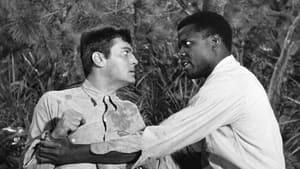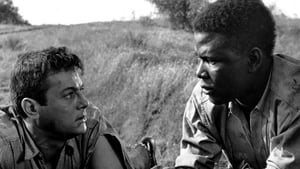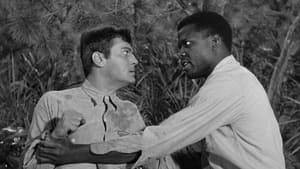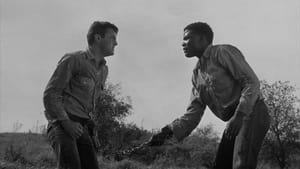Contact: info@alwanfilm.com
Video Sources 0 Views
Synopsis
Review: The Defiant Ones 1958 Colorized – Rediscovering a Classic in Early Colored Films
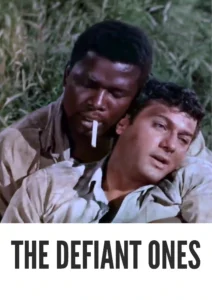
Introduction
The Defiant Ones, released in 1958, stands as a seminal piece in the realm of early colored films. Directed by Stanley Kramer, this riveting drama tackles themes of racial tension and human connection in a charged narrative that still resonates today. In this article, we delve into the significance of its early colored version, exploring how colorization affects the viewing experience and its broader implications for film history.
Check The Full Colorized Movies List
Check Our Colorized Movies Trailer Channel
Understanding The Defiant Ones 1958 Colorized: Director, Cast, and Genre
Stanley Kramer’s vision for The Defiant Ones 1958 was nothing short of groundbreaking. With powerhouse performances by Sidney Poitier and Tony Curtis, the film transcends its era, capturing the essence of the human spirit amidst adversity. Positioned within the genre of socially conscious dramas, it remains a hallmark of cinematic storytelling.
Kramer’s directorial choices imbue the film with raw authenticity, drawing viewers into the visceral world of two escaped convicts, one black and one white, shackled together as they navigate the harsh landscape of the American South. Their unlikely bond forces them to confront their prejudices and find common ground in the face of danger. It’s a tale of survival and redemption that unfolds with gripping intensity, leaving an indelible mark on audiences.
Exploring the World of The Defiant Ones 1958 Colorized: Plot and Characters
The Defiant Ones 1958 follows the journey of two escaped convicts, Noah Cullen (Sidney Poitier) and John “Joker” Jackson (Tony Curtis), who are chained together as they flee from a chain gang. Despite their initial animosity towards each other, they must rely on one another to survive in the hostile environment of the Southern wilderness.
As they journey through swamps and forests, evading law enforcement and confronting their own prejudices, Noah and Joker develop a begrudging respect for one another. Their shared struggles force them to confront the societal barriers that divide them, leading to a powerful climax that challenges the audience’s perceptions of race and humanity.
The complex characters of Noah and Joker are brought to life by the exceptional performances of Poitier and Curtis. Poitier’s portrayal of Noah as a proud and determined man fighting against the injustices of the world is both poignant and inspiring, while Curtis brings a nuanced vulnerability to the role of Joker, a man grappling with his own demons and seeking redemption.
The Art of Film Colorization
Film colorization, the process of adding color to black and white footage, has long been a contentious issue in the world of cinema. While it offers a new perspective on classic films, purists argue that it dilutes the original artistic intent of the filmmakers. However, proponents of colorization argue that it breathes new life into old movies, making them more accessible to modern audiences.
The process of colorizing a film involves meticulously analyzing each frame and digitally adding color to recreate the look and feel of the original scene. This requires a delicate balance between preserving the integrity of the original black and white footage and enhancing it with vibrant colors that enhance the viewing experience.
Early Colored Films: A Brief History
The history of early colored films dates back to the late 19th century, with filmmakers experimenting with various techniques to add color to their movies. One of the earliest methods involved hand-painting each frame of the film, a labor-intensive process that produced vibrant but often inconsistent results.
In the early 20th century, Technicolor revolutionized the industry with its groundbreaking three-strip process, which allowed filmmakers to capture full-color images on celluloid. This technology was used to create some of the most iconic films of the era, including The Wizard of Oz and Gone with the Wind.
The Defiant Ones 1958 and Its Early Colored Version
In recent years, there has been a growing trend towards releasing classic black and white films in colorized versions. The Defiant Ones 1958 is one such example, with a newly colorized version allowing audiences to experience the film in a whole new light.
The decision to release The Defiant Ones 1958 in a colorized format was met with mixed reactions from both critics and audiences. While some welcomed the opportunity to see the film in color for the first time, others expressed concern that the colorization process would detract from the film’s original artistic vision.
The Debate Over Film Colorization
The debate over film colorization is a contentious issue that has divided filmmakers and cinephiles for decades. Proponents argue that colorization breathes new life into old movies, making them more accessible to modern audiences who may be put off by black and white films. They also argue that colorization can enhance the visual experience of a film, adding depth and richness to the imagery.
However, opponents of colorization argue that it undermines the artistic integrity of the original film, robbing it of its unique aesthetic and historical significance. They argue that black and white cinematography is an essential part of the film’s identity, and that colorization alters the director’s original vision.
Examining The Defiant Ones 1958 as an Early Colored Film
As with any colorized film, the decision to release The Defiant Ones 1958 in color raises questions about how the colorization process affects the viewing experience. Does adding color enhance the film’s emotional impact, or does it detract from the gritty realism of the original black and white footage?
In the case of The Defiant Ones 1958, the colorization process adds a new layer of depth to the film, highlighting the lush landscapes of the Southern wilderness and bringing the characters to life in vibrant detail. However, some purists may argue that the colorization detracts from the film’s gritty realism, robbing it of its raw authenticity.
Influence and Legacy: The Defiant Ones 1958 Colorized’s Impact on Cinema
The Defiant Ones 1958 has left an indelible mark on the world of cinema, inspiring generations of filmmakers with its powerful storytelling and groundbreaking performances. Its exploration of race, identity, and human connection paved the way for future filmmakers to tackle similar themes in their own work.
One of the most significant legacies of The Defiant Ones 1958 is its influence on the Western genre, with its tale of two unlikely companions on a journey of self-discovery inspiring countless imitators. This influence can be seen in films such as A Fistful of Dollars, which borrows heavily from The Defiant Ones’ narrative structure and themes of redemption.
Director’s Cinematic Legacy: Beyond The Defiant Ones 1958 Colorized
Stanley Kramer’s impact on the world of cinema extends far beyond The Defiant Ones 1958. Throughout his career, he tackled a wide range of social issues in films such as Guess Who’s Coming to Dinner and Judgment at Nuremberg, earning him a reputation as one of Hollywood’s most fearless filmmakers.
Kramer’s commitment to tackling difficult subjects and challenging societal norms continues to inspire filmmakers to this day, cementing his legacy as a true pioneer of American cinema.
Themes Explored in The Defiant Ones 1958 Colorized
The Defiant Ones 1958 explores a wide range of themes, from race and identity to friendship and redemption. At its core, it is a story about two men from vastly different backgrounds who are forced to confront their prejudices and find common ground in the face of adversity.
The film’s exploration of race relations in America is particularly resonant, with its depiction of institutionalized racism and systemic injustice striking a chord with audiences around the world. It serves as a powerful reminder of the importance of empathy and understanding in a world torn apart by division and hatred.
Reception and Controversy Surrounding The Defiant Ones 1958 Colorized
Upon its release, The Defiant Ones 1958 was met with critical acclaim, with praise for its powerful performances and thought-provoking narrative. Sidney Poitier and Tony Curtis received widespread acclaim for their performances, earning Academy Award nominations for their roles.
However, the decision to release The Defiant Ones 1958 in a colorized format sparked controversy among purists, who argued that the colorization process undermined the film’s original artistic vision. Despite these criticisms, the colorized version of the film found a new audience, introducing The Defiant Ones to a new generation of viewers.
Where to Watch The Defiant Ones 1958 Colorized Online
The Defiant Ones 1958 is available to stream on various platforms, including Amazon Prime Video, iTunes, and Google Play Movies. Whether you choose to watch the film in its original black and white format or the newly colorized version, it remains a timeless classic that continues to resonate with audiences of all ages.
FAQs About The Defiant Ones 1958 Colorized
Q: What is the significance of The Defiant Ones 1958 in film history? A: The Defiant Ones 1958 is considered a landmark film for its exploration of race, identity, and human connection. Its powerful performances and thought-provoking narrative have cemented its status as a timeless classic.
Q: Is The Defiant Ones 1958 based on a true story? A: While The Defiant Ones 1958 is a work of fiction, it is inspired by real-life events and societal issues. Its portrayal of two escaped convicts from different racial backgrounds forced to work together to survive reflects the racial tensions of the era.
Q: What awards did The Defiant Ones 1958 win? A: The Defiant Ones 1958 received several Academy Award nominations, including Best Actor for Sidney Poitier and Best Supporting Actor for Tony Curtis. It also won the Academy Award for Best Original Screenplay.
Conclusion
In conclusion, The Defiant Ones 1958 remains a timeless classic that continues to captivate audiences with its powerful storytelling and groundbreaking performances. Whether viewed in its original black and white format or the newly colorized version, it serves as a powerful reminder of the enduring power of cinema to inspire, provoke, and entertain.
While the debate over film colorization will continue to rage on, there is no denying the impact of The Defiant Ones 1958 on the world of cinema. Its exploration of race, identity, and human connection remains as relevant today as it was over six decades ago, ensuring its place in the pantheon of great American films. So, whether you’re a purist who prefers the original black and white version or a newcomer curious to experience the film in vibrant color, The Defiant Ones 1958 is essential viewing for any cinephile.
